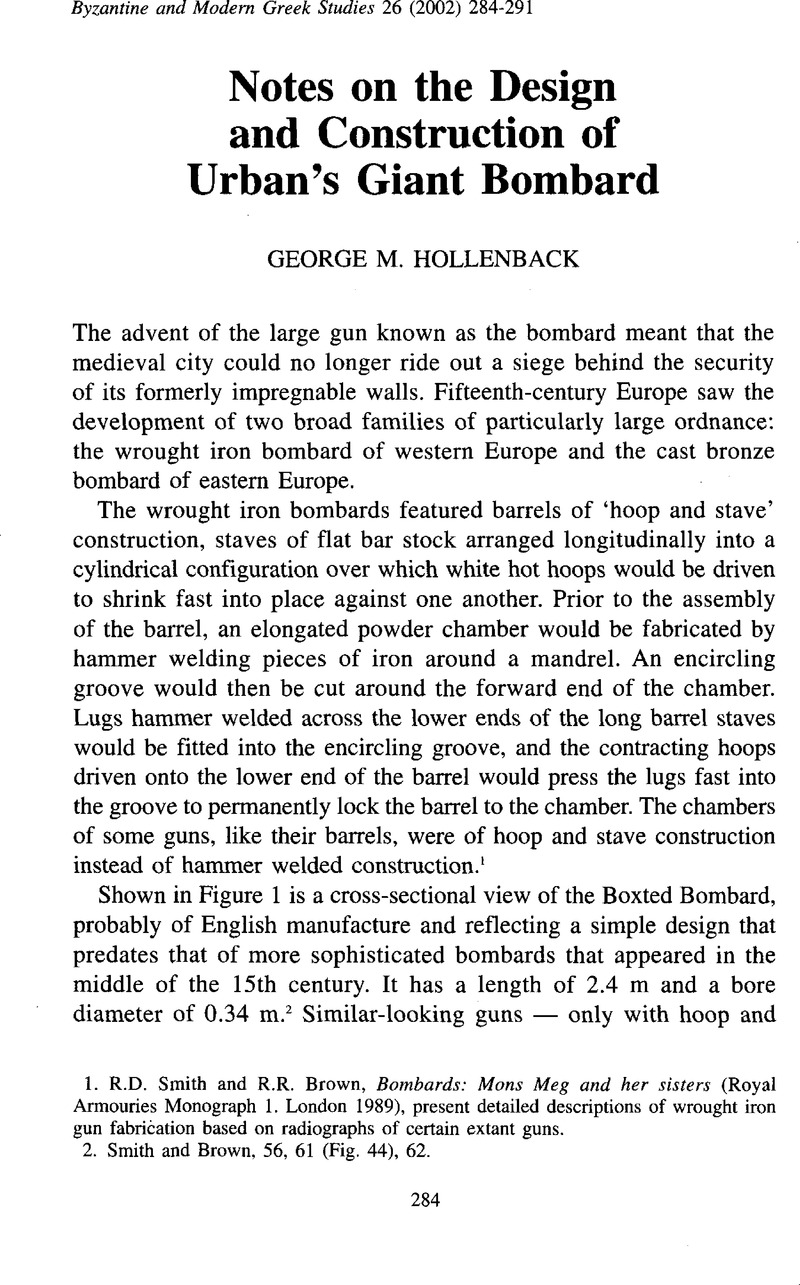No CrossRef data available.
Published online by Cambridge University Press: 22 January 2016

1. Smith, R.D. and Brown, R.R., Bombards: Mons Meg and her sisters (Royal Armouries Monograph 1. London 1989)Google Scholar, present detailed descriptions of wrought iron gun fabrication based on radiographs of certain extant guns.
2. Smith and Brown, 56, 61 (Fig. 44), 62.
3. Angelucci, A., Documenti inediti per la Storia delle Armi da Fuoco italiane (Volume 1 - Parte I-. Graz 1972/1869) 68, tav. 1Google Scholar.
4. Smith and Brown, 32, 37 (Fig. 24), 48.
5. Greek text: Reinsch, D.R., ed., Critobuli Imbriotae Historiae (Berlin 1983) 43–45 Google Scholar. English translations: Riggs, C.T., trans., History of Mehmed the Conqueror (Princeton 1954) 43–44 Google Scholar and Lefroy, J.H., ‘The great cannon of Muhammad II’, The Archaeological Journal 25 (1868) 261–280 at 265-268CrossRefGoogle Scholar. Lefroy’s translation is actually a translation of P.A. Déthier’s French translation from the Greek; it can also be found in Hogg, O.F.G., Artillery: its origin, heyday and decline (London 1970) 214–215 Google Scholar.
6. Lefroy, 272, attests this kind of trimming on Turkish ordnance.
7. Schilbach, E., Byzantinische Metrologie (Handbuch der Alteitumwissenschaft XXI.4. Munich 1970) 19–21 Google Scholar.
8. Cf. Hogg, 212-213.
9. Pears, E., The destruction of the Greek empire and the story of the capture of Constantinople by the Turks (New York 1968/1903) 246 Google Scholar.
10. Smith and Brown, 70, 75, cite a catalogued cannonball diameter of 17.7 in. (0.45 m) for the extant bombard known as Michelette 2, which has a bore diameter of 0.51 m. This would give a margin of clearance of 0.03 m all the way around the ball, a decidedly less snug fit than that for Urban’s reconstructed bombard and its ball.
11. Kritoboulos describes how a large, snug-fitting wooden stopper was hammered home into the gun, but it is not absolutely certain whether the stopper fit the chamber (Riggs’ translation) or the bore (Lefroy/Déthier’s translation). The text does state, however, that the ball was pushed hard against the stopper until they were ‘bound close together from all around’ (sunesphingon ...kuklōthen). This suggests that the stopper was a bore diameter sized sabot into which the ball was seated. Lefroy, 267, n. 6, suggests that it was ‘raised at the edges and concave’.